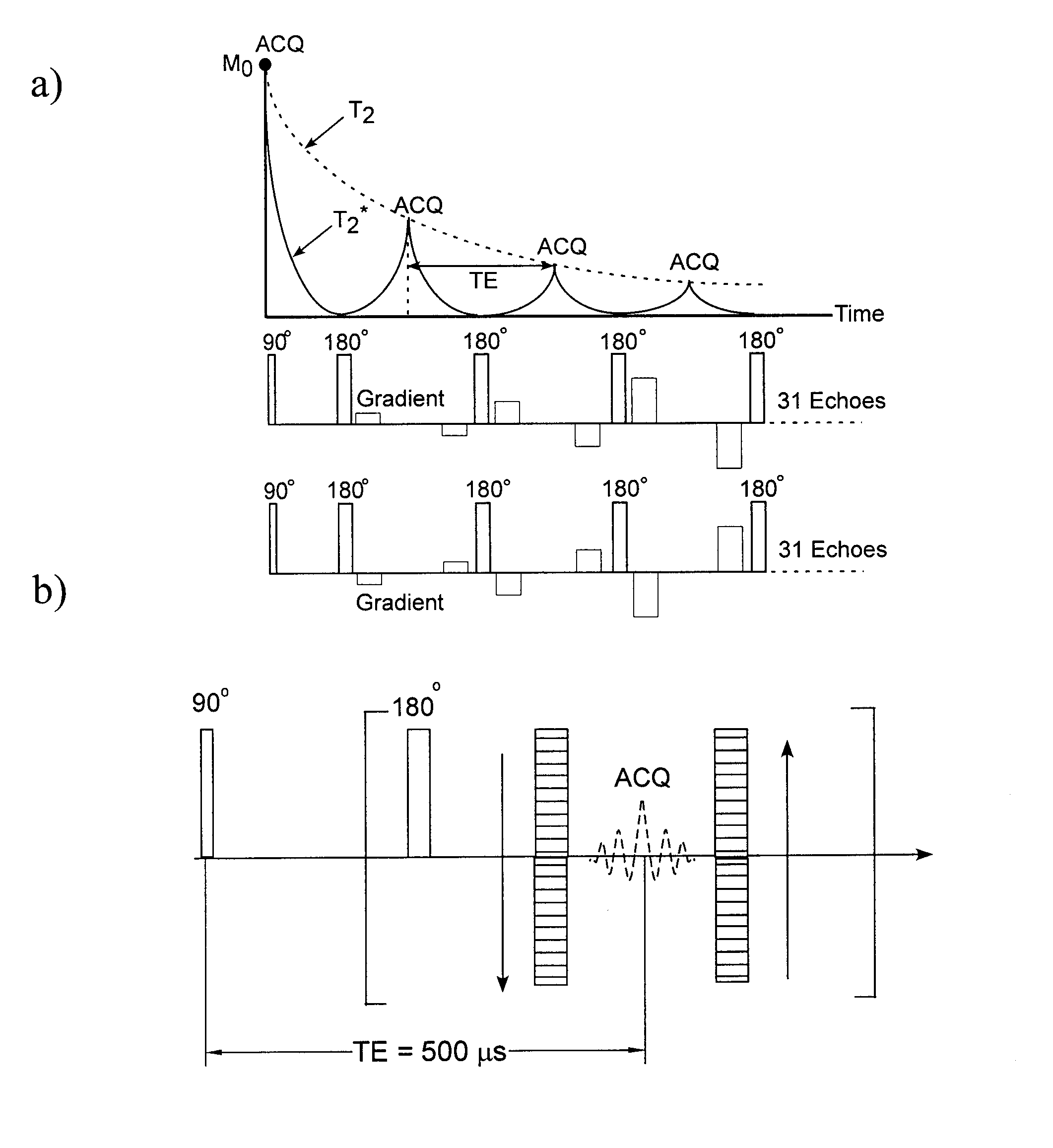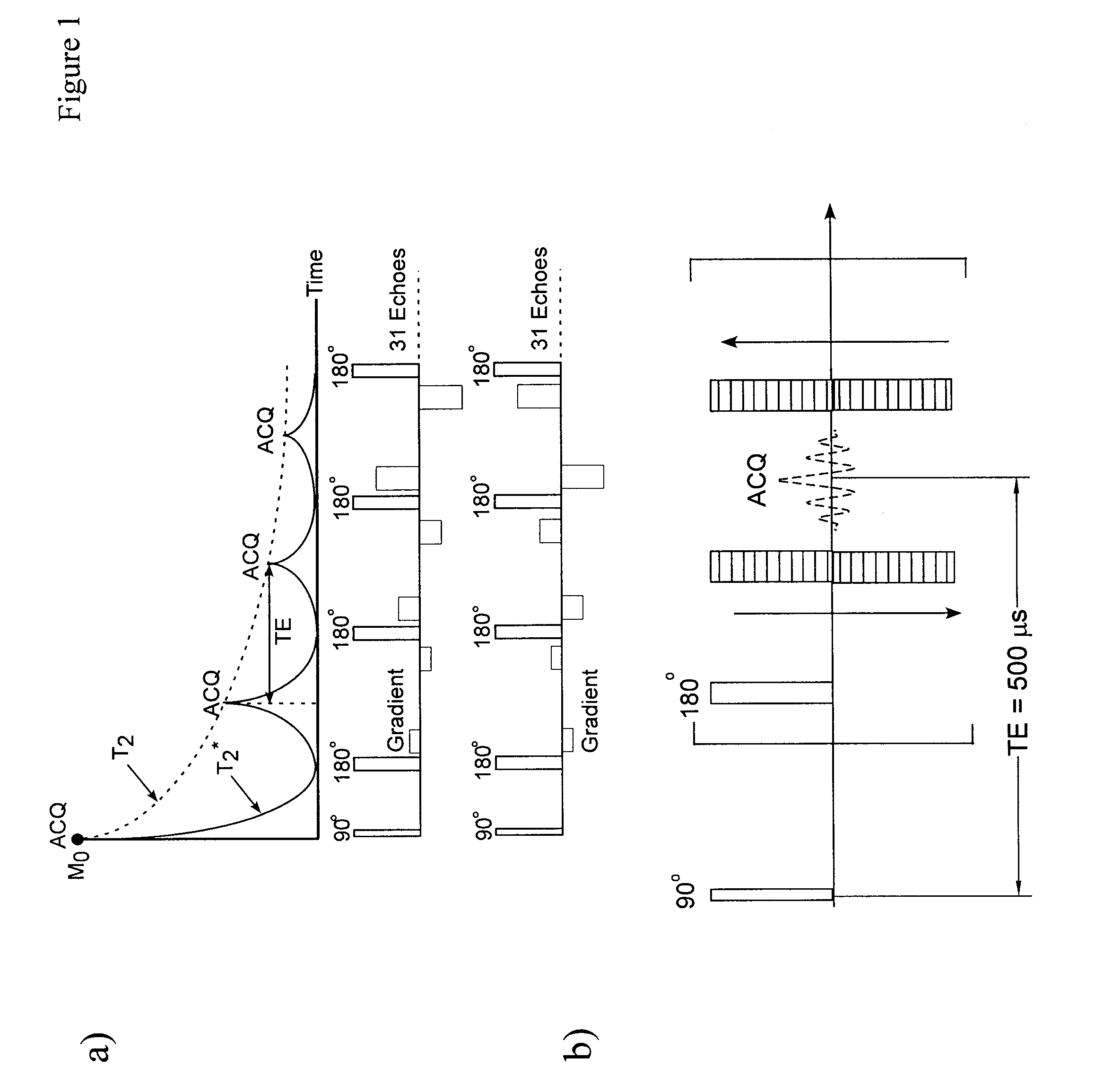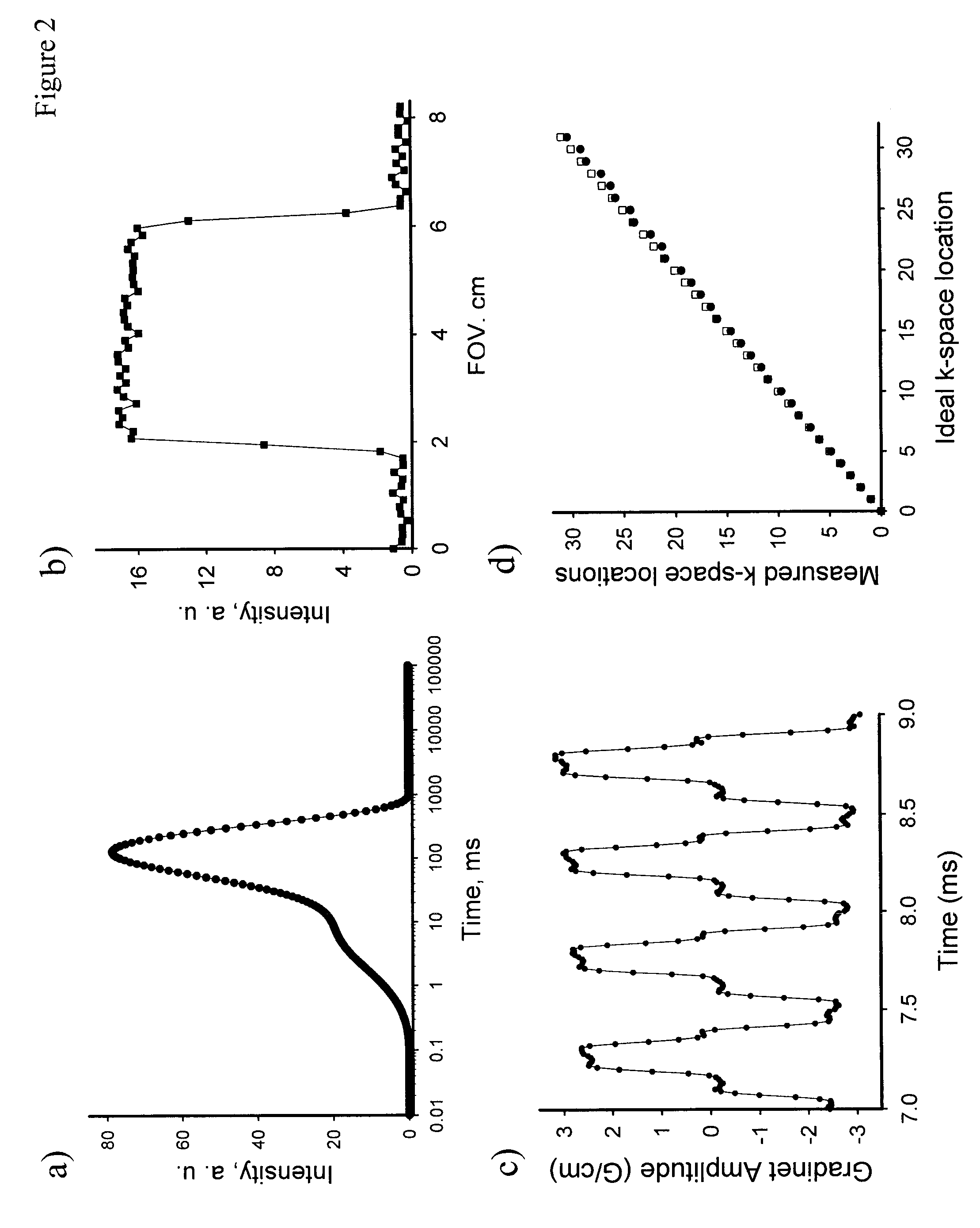Spin echo SPI methods for quantitative analysis of fluids in porous media
a technology of porous media and spi, which is applied in the direction of measurement using nmr, instruments, nuclear magnetic resonance analysis, etc., can solve the problems of remarkably difficult to achieve the simple density image of fluid distribution in porous media, without relaxation time contrast, and achieve the effect of fast determination of spatially resolved t2 distributions
- Summary
- Abstract
- Description
- Claims
- Application Information
AI Technical Summary
Benefits of technology
Problems solved by technology
Method used
Image
Examples
examples
A. Hybrid SE-SPI
Core Plug Image by Hybrid SE-SPI
[0071]Berea sandstone (sandstone #1) which has a typical sandstone T2 distribution, shown in FIG. 2a, was imaged employing the pulse sequence of FIG. 1a. Acquired with 4 scans in 20 seconds at 0.35 T, the core plug image, FIG. 2b, is a high quality 1D fluid content image with an SNR of 32. As with all experimental and simulated images in the embodiments of this invention, the imaging axis is longitudinal to the sample.
[0072]The high quality profile, at short echo time results from the pure phase encoding nature of this experiment. In a phase encoding experiment, it is the increment in gradient area that is most important, not a high fidelity gradient waveform. The gradient waveform was measured employing the methodology of reference [24]. FIG. 2c shows that with a phase encoding time (tp) as short as 150 μs, distortion in the gradient waveform is inevitable. The gradient waveform in FIG. 2c would induce artifacts in a frequency encodin...
PUM
| Property | Measurement | Unit |
|---|---|---|
| echo time | aaaaa | aaaaa |
| echo time | aaaaa | aaaaa |
| phase encoding time | aaaaa | aaaaa |
Abstract
Description
Claims
Application Information
 Login to View More
Login to View More - R&D
- Intellectual Property
- Life Sciences
- Materials
- Tech Scout
- Unparalleled Data Quality
- Higher Quality Content
- 60% Fewer Hallucinations
Browse by: Latest US Patents, China's latest patents, Technical Efficacy Thesaurus, Application Domain, Technology Topic, Popular Technical Reports.
© 2025 PatSnap. All rights reserved.Legal|Privacy policy|Modern Slavery Act Transparency Statement|Sitemap|About US| Contact US: help@patsnap.com



